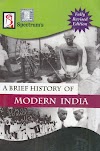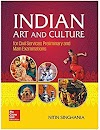Urban Local Self Government
Mahatma Gandhi
Characteristics of Urban Area
- Population not less than 5 lakh
- Population density not less than 440 person/sq. km.
- 75% of male population engaged in non-agricultural activities.
Difference between Rural Local Self Government and Urban Local Self Government
Rural Local Self Government (Panchayats)
- Mentioned in Part IX of the Constitution
- Article 243 A to 243 O
- Schedule 11 mentioned 29 functional subjects of Panchayats
- Provides 3-tier of local government
- Added by 73rd Constitutional Amendment Act 1992
Urban Local Self Government
- Mentioned in Part IXA of the Constitution
- Article 243 P to 243 ZG
- Schedule 12 contains 18 functional subjects for urban local government
- It does not provide any tier of government rather it provides various different types of Urban Local Self Government
- Added by 74th Constitutional Amendment Act 1992
74th Constitutional Amendment Act 1992
It mentioned only three types of urban local self government -
- Municipal corporation (in Big urban areas)
- Municipal council (in Small urban areas)
- Nagar panchayat (in transitional areas)
Other three types of urban local self government which are not mentioned in the constitution are -
- Industrial council (in Industrial areas)
- Cantonment board (in Cantt/Service areas)
- Port trust (in Port areas)
With respect to the rural local self government, it is a 3-tier structure but with respect to the urban local self government, it is not a 3-tier structure rather it is a 3 broad form of government each found in different types of urban areas.
12th Schedule of the Constitution
12th Schedule has 18 subjects to be administered by the urban local self government. They are -
- Urban planning (Town planning)
- Regulation of land use and construction of building
- Planning for economic and social development
- Roads and bridges
- Water supply
- Public health & sanitation and waste management
- Fire service
- Urban forestry
- Safeguard interest of weaker sections
- Slum improvement
- Urban poverty alleviation
- Parks, gardens, playgrounds, etc.
- Promote cultural, educational and aesthetic aspects
- Burials, cremations and electric cremation
- Prevent cruelty to animals
- Registration of birth and death
- Street light, Parking, bus stop, etc.
- Regulate slaughter house and tanneries
The commonly found structure of urban local government as discussed by 74th Constitutional Amendment are Municipal Corporation, Municipal Council and Nagar Panchayat.
Municipal Corporation - It is a form of urban local government found in bigger urban areas. However, 74th Constitutional Amendment act did not define the Urban areas and left it on states to define it accordingly.
Composition of Municipal Corporation
Municipal Corporation broadly has got 2 wings -
- Deliberative wing, i.e., policy making body
- Executive wing, i.e., implementation body
The entire constituency under the municipal corporation is further divided into wards. Each ward is headed by a Municipal Councilor chosen by the people of the ward directly.
All the members of various wards forms the council of the municipal corporation besides few other members, ex-officio members (MLA, MP & DC) a decided by the state.
Municipal corporation choses a presiding officer of the council called Mayor either through direct election, i.e., elected by the people or indirectly by and from amongst the elected members of various wards.
The entire executive wing of the municipal corporation is headed by Municipal Commissioner ( who is usually a bureaucrat).
Municipal Council - It is found as a type of Urban local government found in smaller urban areas having structure same as the municipal corporation.
The structure and composition of municipal council is same as municipal corporation. However, municipal council has lesser financial and administrative autonomy compared to municipal corporation.
Municipal corporation can interact with the state government directly where as municipal council interacts with the state government through directorate of urban affairs.
Nagar Panchayat - Also known as Town Area Council or Notified Area Council, is a form of urban local government found in the areas which are intermediate in nature, i.e., satisfying the criteria of being an urban area but still other features are rural.
The powers, finances and the functions of the municipal bodies are to be decided by the State legislature.
74th Constitutional Amendment Act left Cantonment board and Industrial council untouched and even the Port trust.
Cantonment Board - It is a type of urban local government found in service areas (Army, Navy and Airforce). This body is directly under the control of the Ministry of Defence having both elected as well as nominated members.
Industrial Council - Governor may declare an area to be industrial township which is to be provided with services by Industrial council. It is completely nominated body, no elected members are there in industrial council.
Ward Committee - Under the 74th Constitutional Amendment Act, it is obligatory on the state government to constitute ward committee for one or more wards with a combined population of more than or equal to 3 lakhs.
Apart from giving constitutional status to municipalities, the 74th Constitutional Amendment Act lays down that in every states two committees shall be there for planning -
- District Planning Committee (Under Article - 243 ZD)
- Metropolitan Planning Committee (Under Article - 243 ZE)
District Planning Committee - Under Article 243 ZD, there shall be in every state (expect Delhi, Schedule areas and Tribal areas) at the district level, a District planning committee to consolidate the developmental plan prepared by panchayats and municipalities following within the district and then to prepare a draft developmental plan for the district as a whole.
Metropolitan Planning Committee - Metropolitan area is an area with the population of 10 lakh or more, comprising one or more municipalities or panchayats as specified by the governor.
Under Article 243 ZE there shall be in every metropolitan area, a Metropolitan planning committee to prepare a draft developmental plan for the metropolitan area as a whole.
State legislature decides the composition and manner of filling the seats. However, two-third of the members of the MPC shall be elected by and from amongst the elected members of Municipalities and chairpersons of panchayats in metropolitan areas.
Weaknesses of 73rd and 74th Constitutional Amendment Act 1992 -
- Though the subjects were given under Schedule 11 (29 Subjects) and Schedule 12 (18 Subjects), the act did not make it compulsory for the state to give all the subjects listed.
- What area will be managed by the local government depends on the will of the State government.
- i.e., The act did not define the functions of the panchayats and municipalities and did not make it compulsory.
- Taxes collected by the local government to be defined by the state government and generally they were given few tax collection responsibility → They have to depend on the State government for funds.
- In short, the act did not provide for the enough financial security to the local governments.
- There is no secretariat assistance to the local bodies (the act did not provide it).
From M. Laxmikant, there were 8 different types of urban local governments, they are -
- Municipal Corporation
- Municipality
- Notified Area Committee
- Town area Committee
- Cantonment Board
- Township
- Port Trust
- Special Purpose Agency
Previous Article - The Panchayats
Next Article - Scheduled Areas
Notes on other subjects
Optional Subject
Note - This is my Vision IAS Notes (Vision IAS Class Notes) and Ashutosh Pandey Sir's Public Administration Class notes. I've also added some of the information on my own.
Hope! It will help you to achieve your dream of getting selected in Civil Services Examination 👍





0 Comments